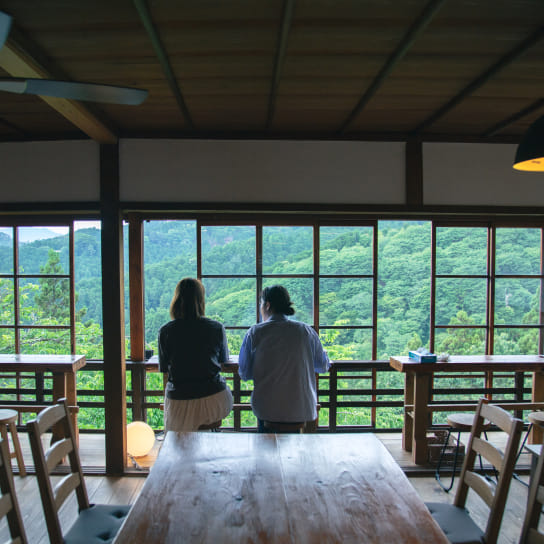Discovering Yoshinoyama: A Staff Getaway (Part I)
2025.10.16
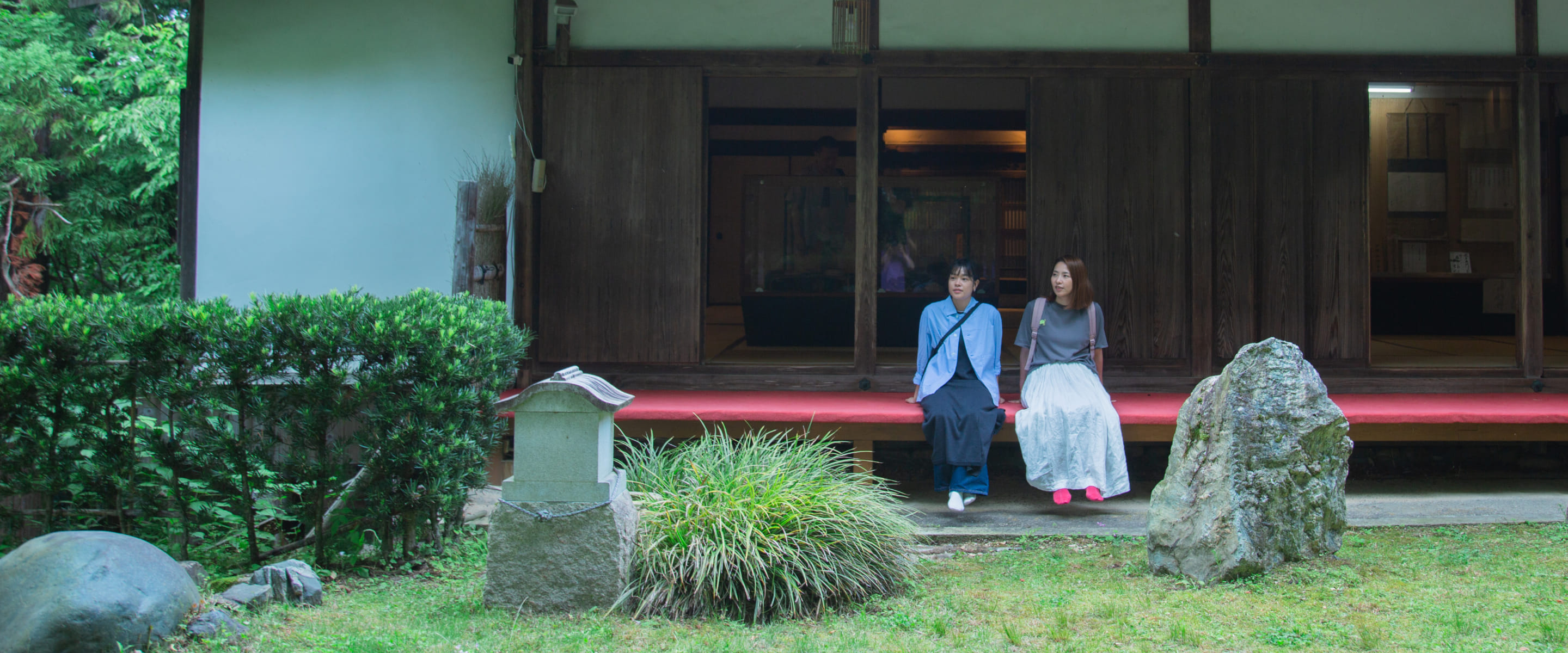
Yoshinoyama, home to MUJI’s lodging facility “MUJI room SAKAMOTOYA,” is widely known as one of Japan’s most famous cherry blossom viewing spots. But beyond spring, visitors can enjoy its breathtaking scenery in every season, explore shrines and temples scattered across the mountains, and savor beloved local delicacies year-round. Our staff set out to experience this land of nature and mythology in Nara’s Yoshinoyama.
Boarding Japan’s Oldest Ropeway to Yoshinoyama
Just a three-minute walk from Kintetsu Yoshino Station is Senbonguchi Station, the gateway to Yoshinoyama. There we found a ropeway with a wonderfully retro feel—and no wonder. Opened in 1929, it is said to be the oldest in Japan.
We were amazed to see it still in operation today. In what felt like no time at all, the ropeway carried us through its historic atmosphere and delivered us to the entrance of Yoshinoyama.
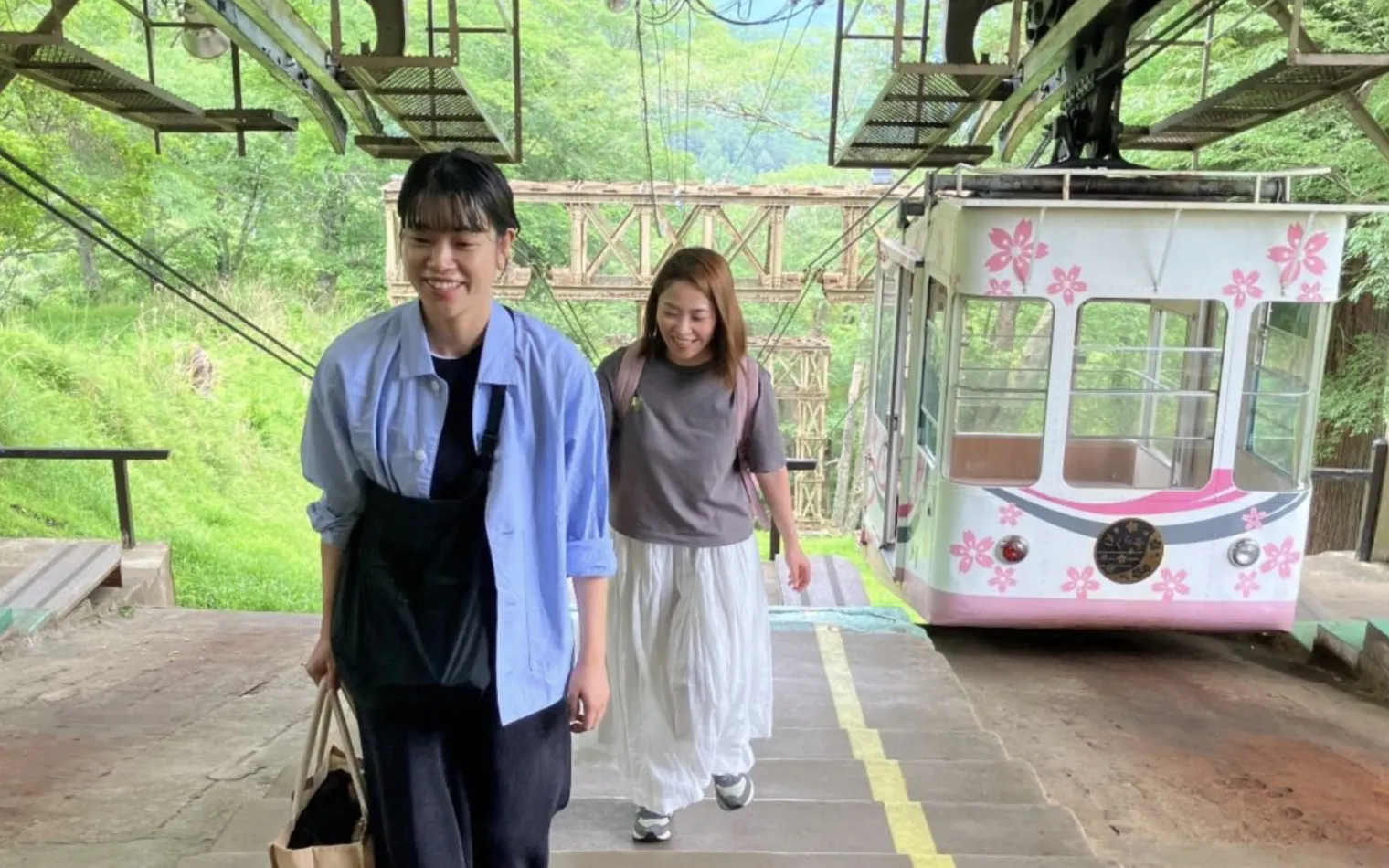
From the cabin windows, we enjoyed views of the trees, which surely change dramatically with each season.
Purification at a World Heritage Site
Yoshimizu Shrine, a UNESCO World Heritage Site, is one of Yoshinoyama’s signature cherry blossom viewing spots. The view of blossoms from the grounds is called “Hitome Senbon” (“a thousand trees at a glance”). During the lush green season, it offers a different but equally stunning landscape.
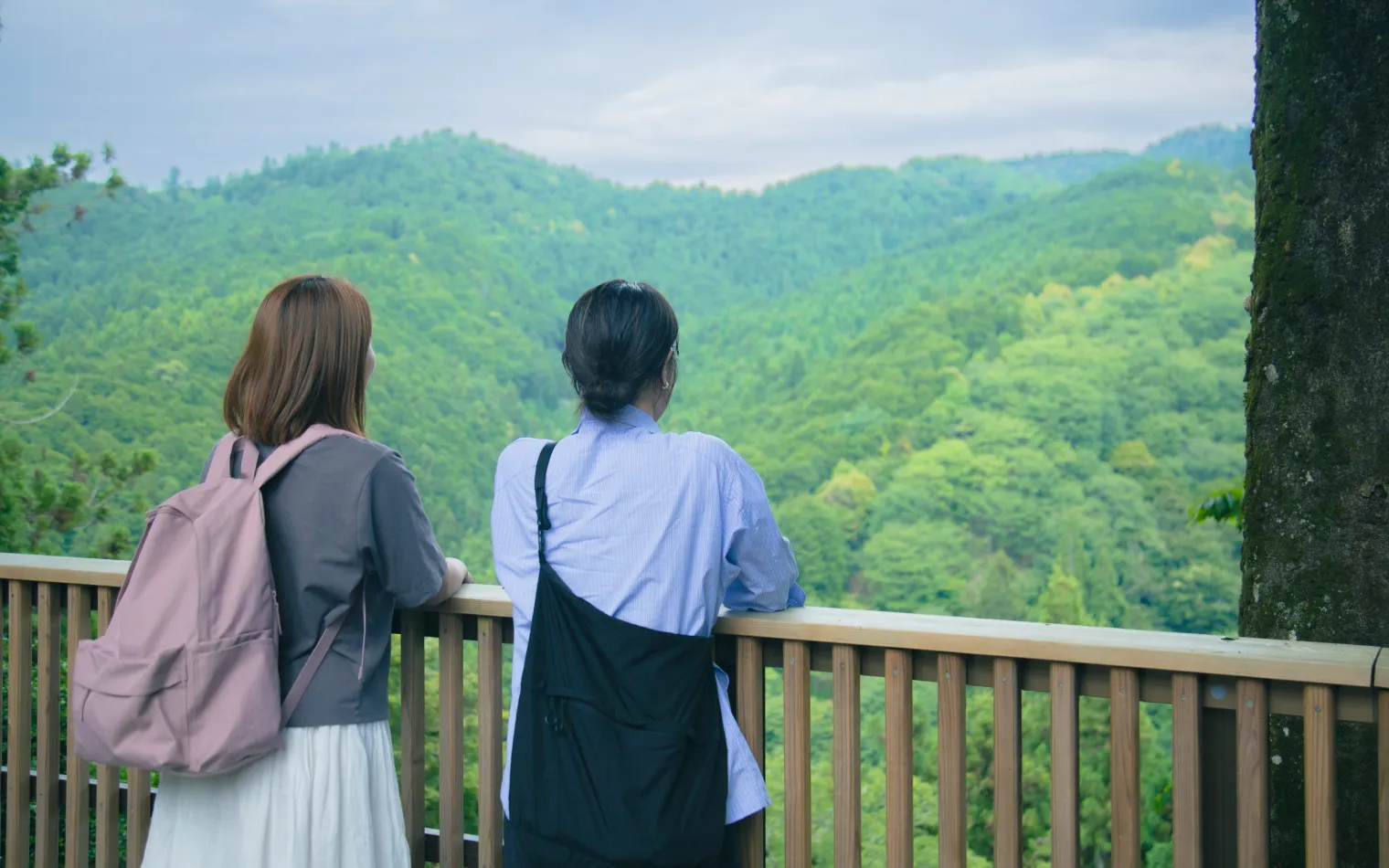
One hidden highlight within the shrine is the “Hoketsumon Gate” located at the back of the study hall. It is said that by performing the ritual cutting of the nine symbolic lines here, one can dispel evil and purify body and spirit. This little-known spiritual site is regarded as a secret power spot.
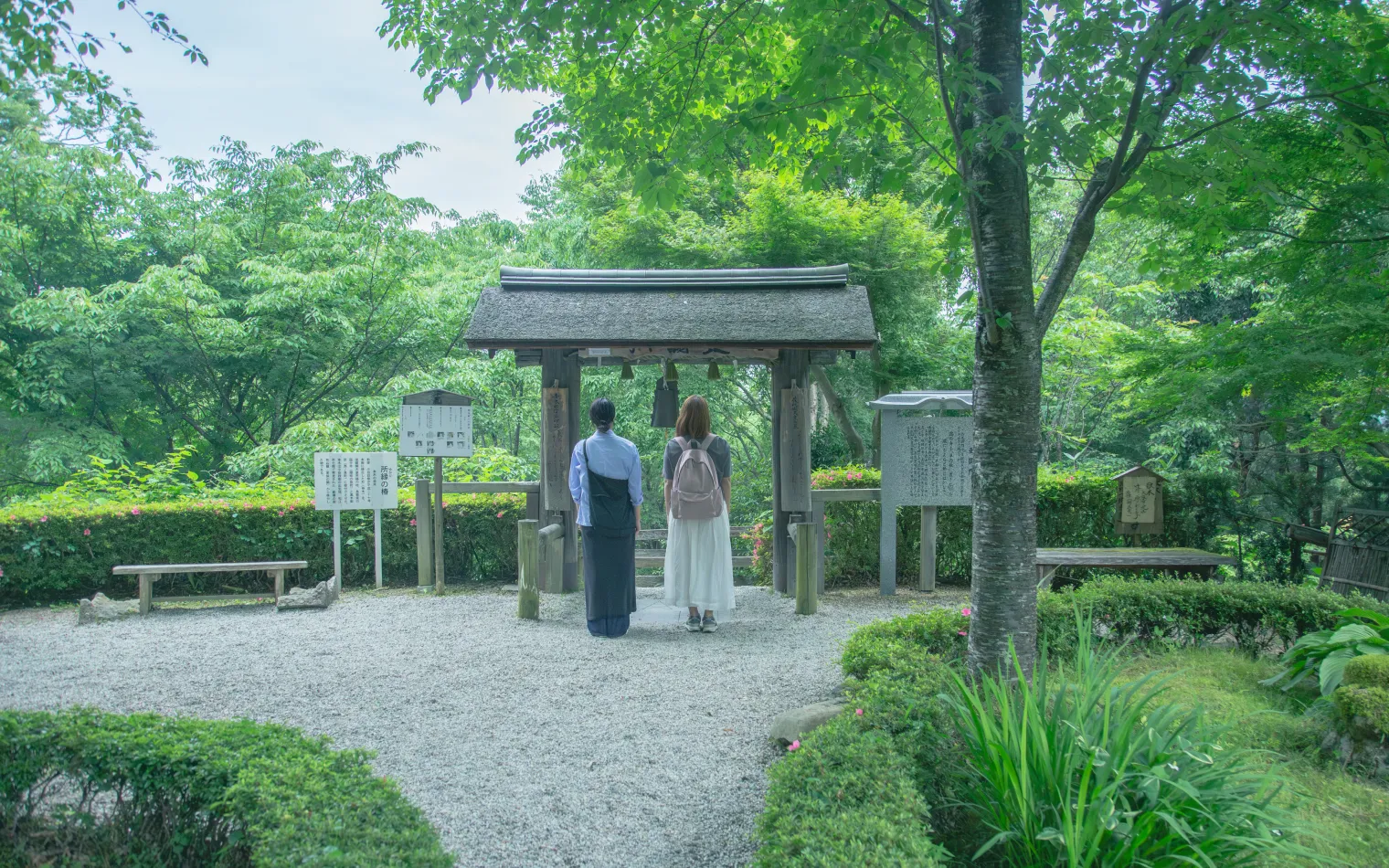
One of our staff members, currently in a yakudoshi (critical year of misfortune according to Japanese tradition), approached the ritual with full determination—carefully performing the steps to ward off negative energy.
Learning About a 1,300-Year-Old Traditional Medicine
On the way to our inn, we were drawn in by an eye-catching three-legged frog ornament, which led us to Fujii Risaburou Yakubo, the main store of the traditional medicine Daranisukegwan. This herbal remedy has been passed down for about 1,300 years.
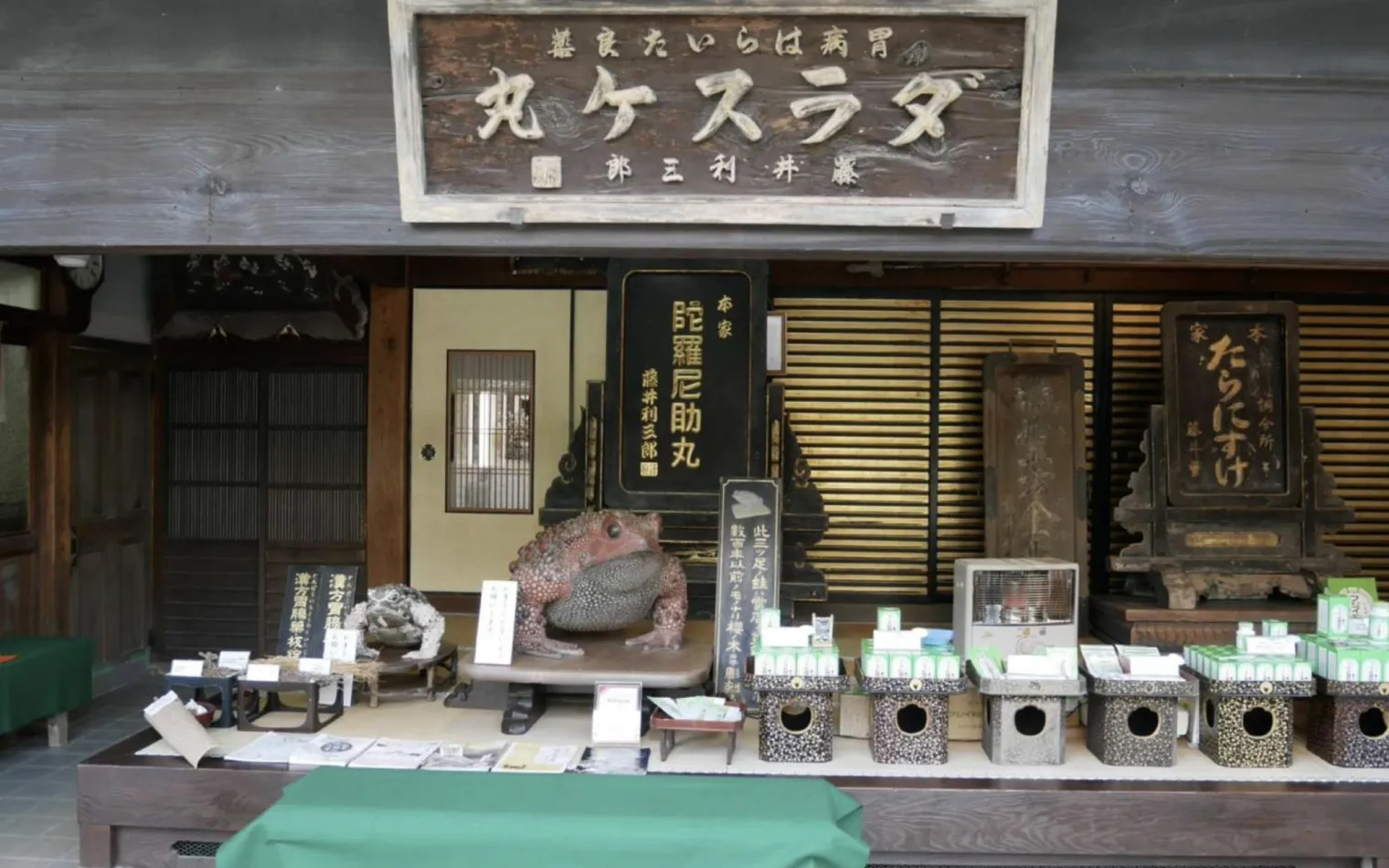
Like the ropeway, this medicine is deeply rooted in Yoshino’s history. Still popular among locals today, it is used as a household remedy for overeating, indigestion, and stomach discomfort. We were even shown the extremely bitter herbs used in its production. Looking at the small, black pellets, it was easy to imagine why people have relied on them for centuries.
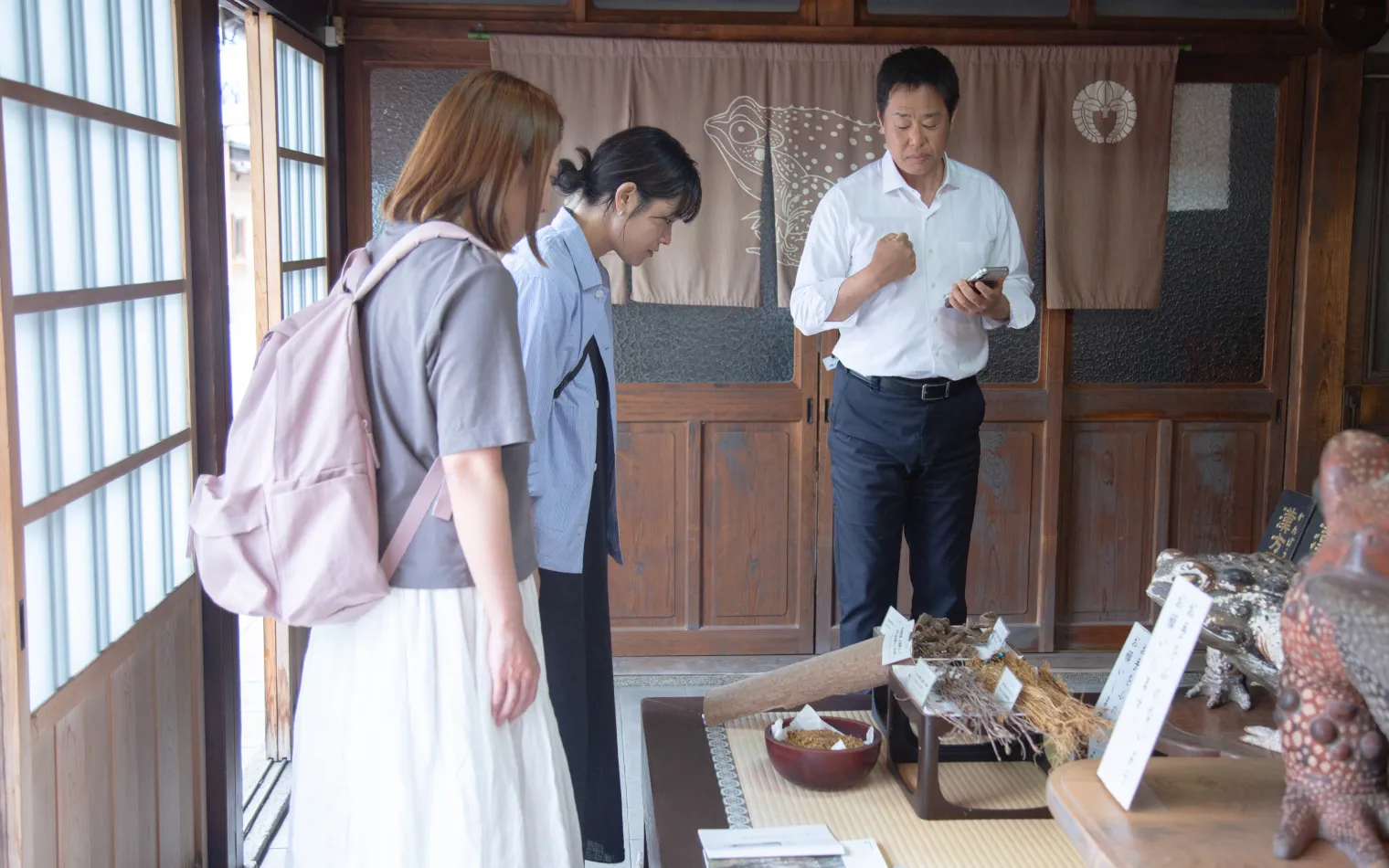
The store itself also tells a story, filled with historic tools and artifacts on display.
Resting Body and Mind at a 100-Year-Old Inn
We stayed at MUJI room SAKAMOTOYA, where three rooms of the century-old inn Sakamotoya have been renovated by MUJI.
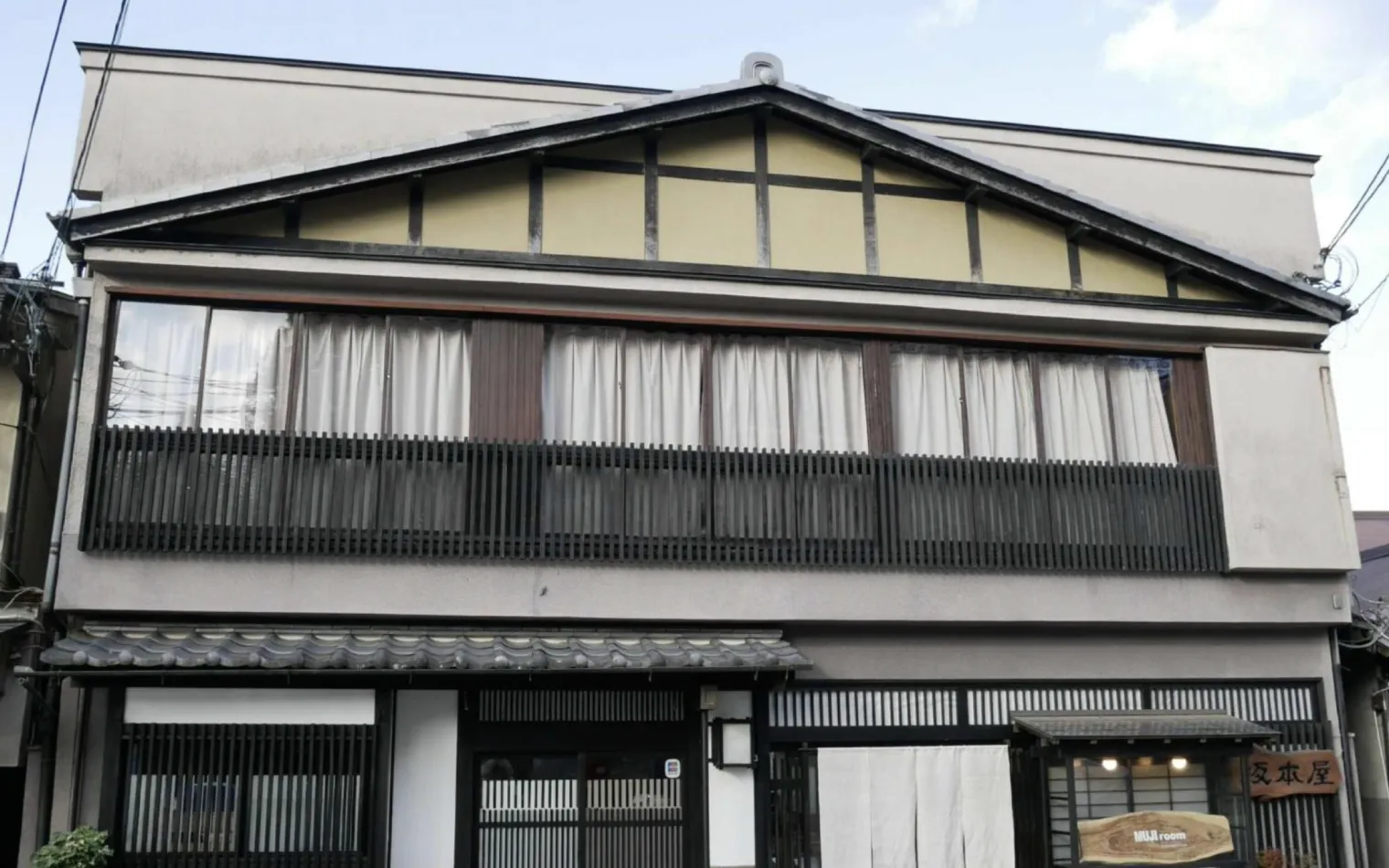
While preserving original features like wooden beams and pillars, the space integrates MUJI’s design sensibility and furnishings crafted by local artisans—creating a one-of-a-kind atmosphere where old and new coexist.
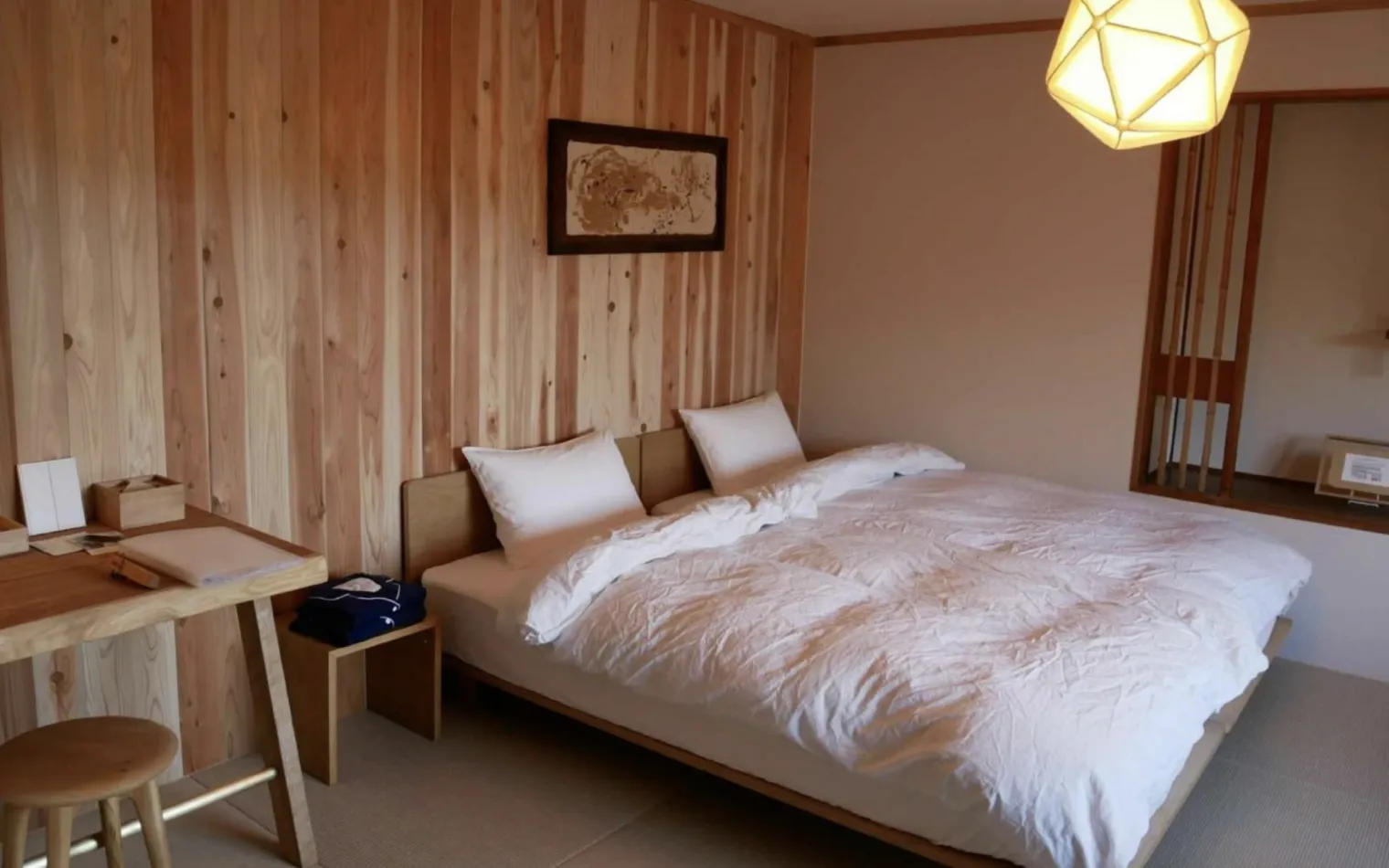
The nostalgic details, such as the tiled washbasins, retro bathrooms, and traditional signage, felt like stepping back in time. Far from outdated, these elements added to the inn’s special charm, reminding us of the beauty of its history.
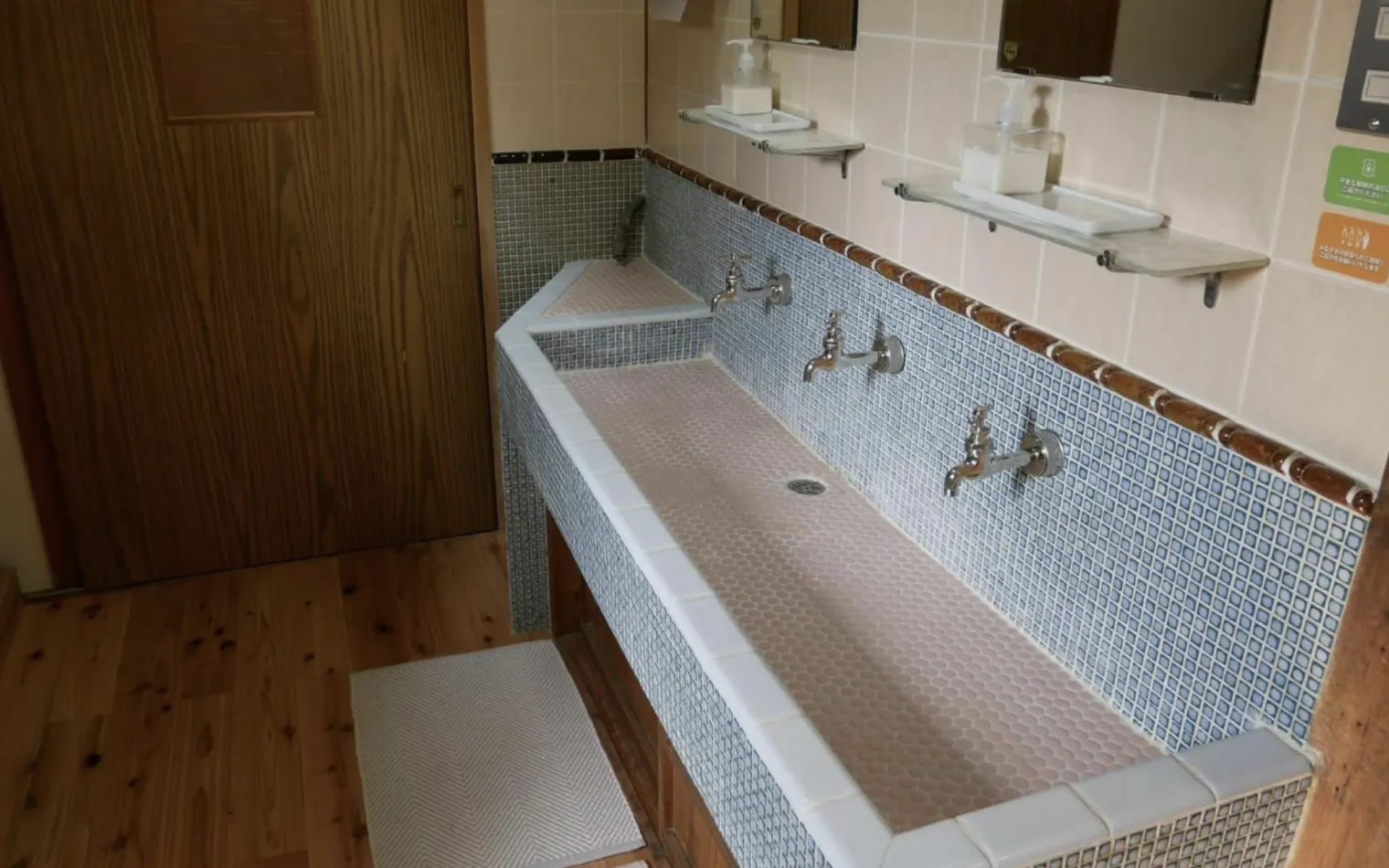
Amenities were, of course, provided by MUJI, which meant we could pack light and still be comfortable. With light meals available and a spacious room featuring a kitchen, staying in and enjoying the room itself was just as appealing as going out.
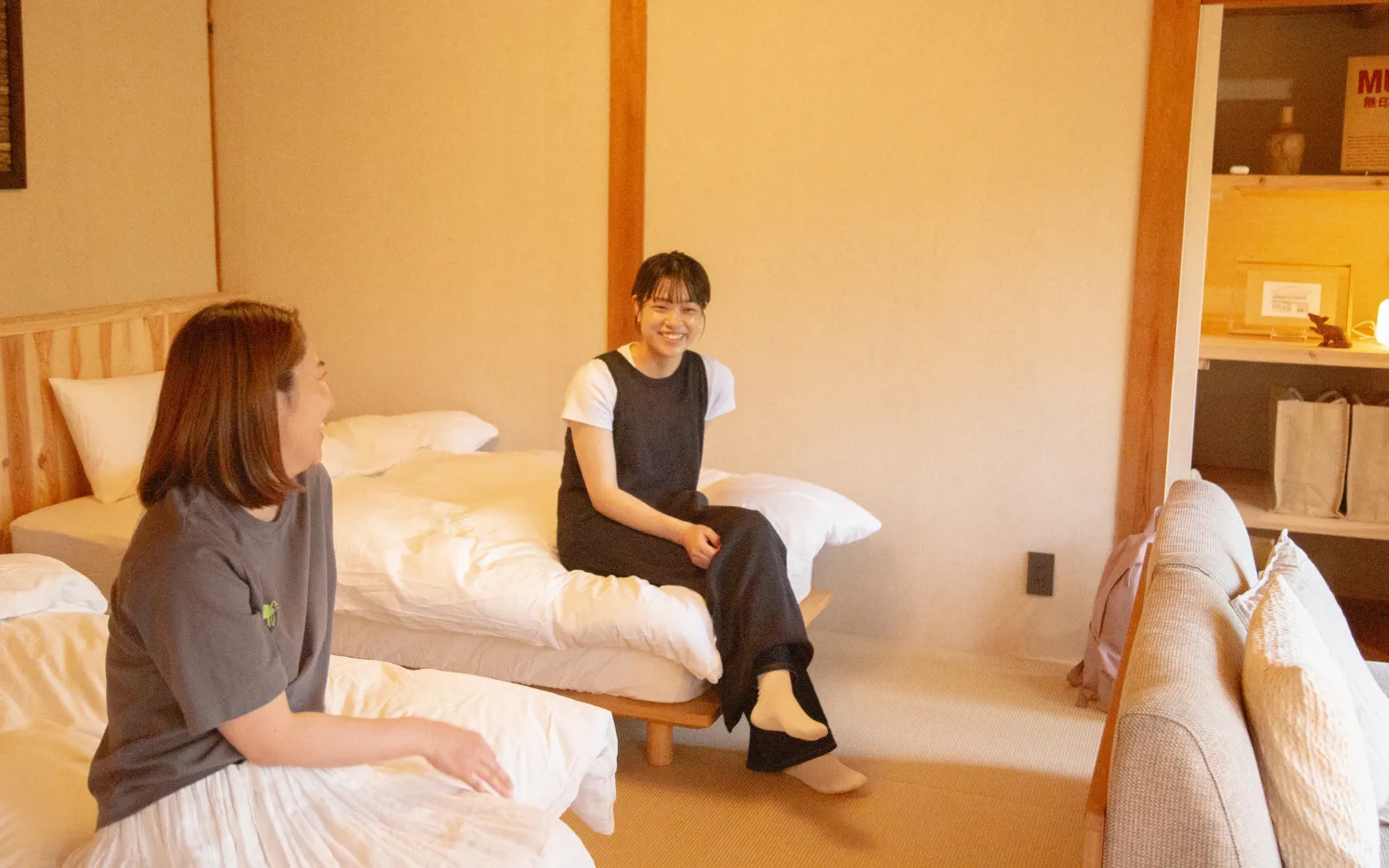
Dinner featured Yoshino specialties such as kudzu udon noodles and persimmon leaf sushi, along with a tasting of sake from three local breweries—Kitaoka Honten, Miyoshino Brewery, and Kitamura Shuzo. Sampling local cuisine and sake is truly one of the highlights of traveling.
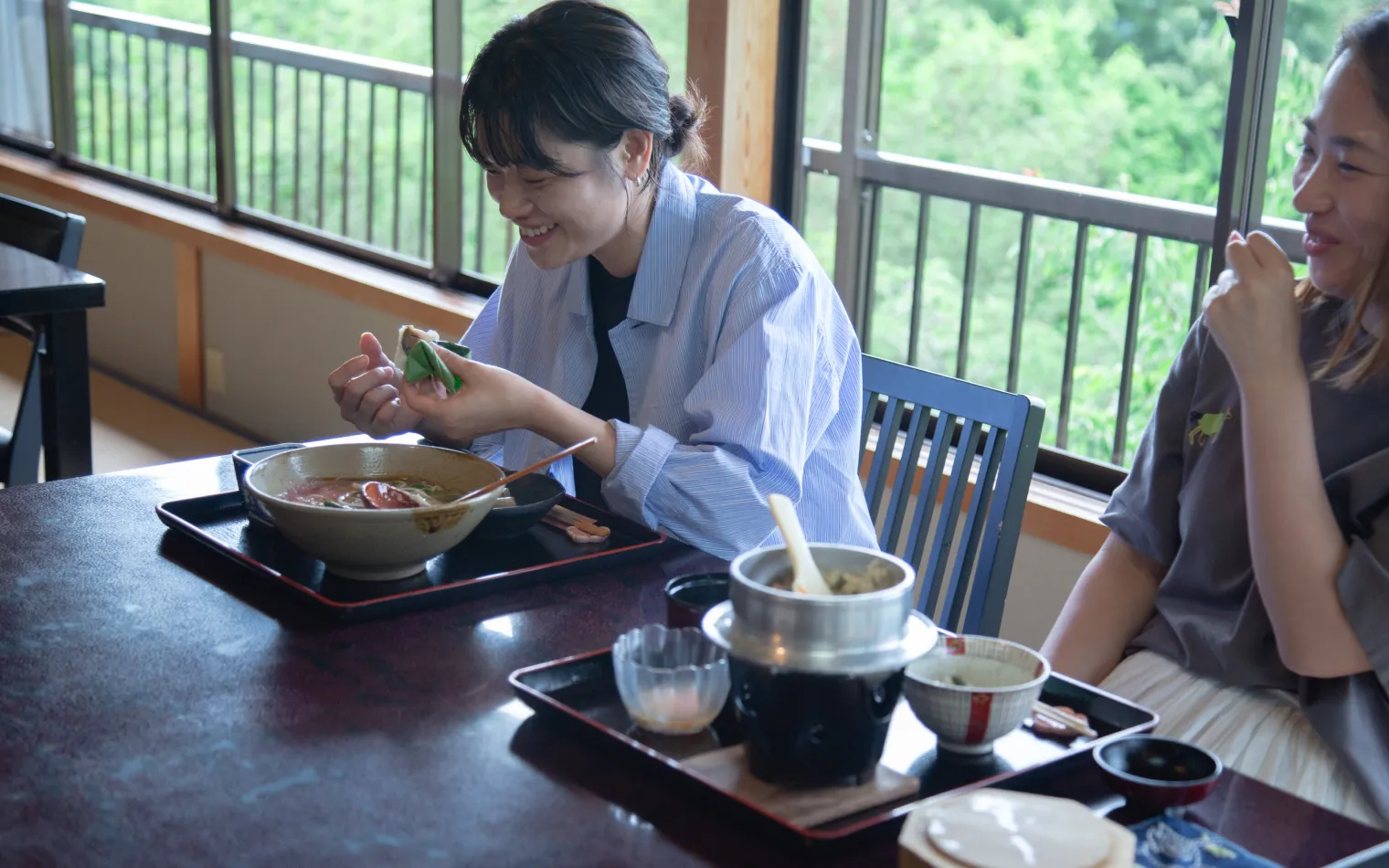
As night fell, Yoshino became wonderfully quiet. Surrounded by the gentle glow of the room’s lights and the soothing aroma of cypress from the MUJI aroma diffuser, we felt ourselves unwind. Without a TV, and enveloped in soft lighting, drowsiness came naturally—a rare early night for us, perfectly setting the stage for the next day.
To be continued in Part 2.
Related MUJI STAY Accommodation
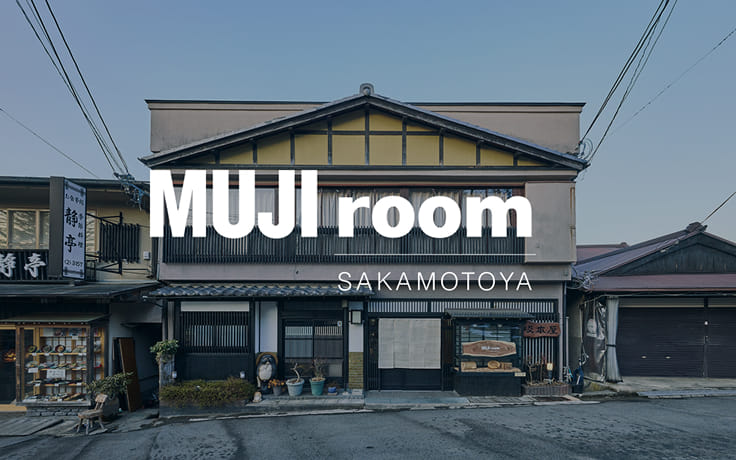
MUJI room SAKAMOTOYA
MUJI room SAKAMOTOYA: It is located in Yoshino Town, Nara Prefecture. MUJI has renovated three rooms of the 100-year-old traditional inn “SAKAMOTOYA.”
